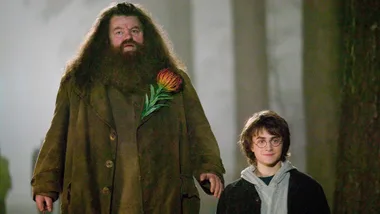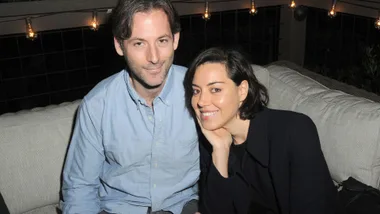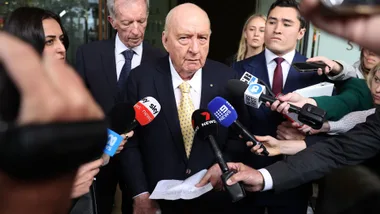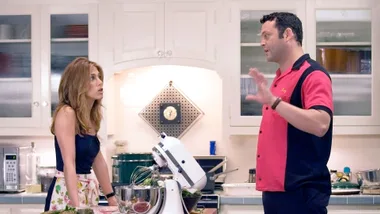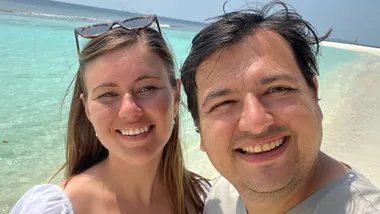Just months ago, we began hearing reports of a mysterious SARS-like virus, coming out of China. Fast-forward to today, and what we now know as COVID-19 has sent shockwaves around the world with the global death toll now standing at over 128,000 and the number of confirmed cases ringing in at more than 2 million. Our cities have been emptied and our lives as we previously knew them have been brought to a standstill.
In Australia, quick-thinking and implementation of strict social-distancing measures, testing, and contact-tracing has seen us keep the virus relatively under control thus far. But, although these stopgap strategies have proved effective with containing the spread of COVID-19 in the short term, these measures are unsustainable. Around us, even traditionally stable industries are collapsing, unemployment is surging and we’re plummetting headfirst into a deep economic recession.
At present, there is no vaccine against the virus and health authorities warn it could be 12-18 months before we have one. That’s relying on the assumption we will be able to develop one – a vaccine for previous strains of coronavirus has never successfully been created before. Terrifyingly, the possibility that one won’t ever be made also exists.
While researchers continue to race to develop a vaccine, we are treading water, living on borrowed time. Because, if we prematurely relax our social distancing measures before we have a vaccine or other mechanisms to prevent outbreaks, we risk turning our flattening curve into a dramatic spike and undermining the hard-won gains we’ve achieved so far.
We don’t yet know what will unfold in the coming weeks. And, while we wait with bated breath, Australia’s healthcare workers are bracing for an unknown battle. What will unfold, we don’t yet know.
“It is like preparing for a war”
“It is like preparing for a war you’ve never fought” says Royal Melbourne Hospital Nurse Unit Manager of Intensive Care, Michelle Spence.
“I’ve been in this ICU for 23 years, a manager for about 12 years and involved in things like Bourke Street and Flinders Street [terrorist attacks] and train crashes but I’ve never seen anything like this before.”
Although dealing with patients with life threatening conditions forms the basis of day-to-day working life for intensive care professionals like Spence, she emphasises why the COVID-19 pandemic is different:
“Some of it is our normal business. We care for critically ill patients every day and that’s just business as usual – but not on this scale. We don’t know what it’s going to be like.”
“What’s also not business as usual is your own personal anxiety. I’ve got small children, a husband and elderly parents. You’ve got to try to deal with your own anxiety, put it in check leave it at the door. As a manager, I’ve also got close to 400 staff and we’re training another 200 staff – so suddenly – under my watch is 600 people who also have all different levels of anxiety and concerns,” says Spence.
“Every now and again, I pause and think: ‘This can’t be real. Maybe it’s been glorified in the media.’ However, being a really big ICU, we have friends and colleagues around the world. I worked in Ireland for a few years. When you touch base with your friends around the world, you realise the stories are true and that’s coming our way. It’s like a tsunami and you just don’t know when it’s going to come. That’s really difficult.”
“There wouldn’t be a doctor alive who’s seen anything quite like this in developed countries,” agrees St Vincent’s Hospital Sydney Anaesthetist, Dr. Jennifer Stevens.
“Early on, there were some intensive care doctors from the hardest hit area in Italy podcasting. I remember the first one I listened to – it was one of the most horrifying things I’ve ever heard. The desperation in the voices of these doctors who realised that they were completely overwhelmed… What they were saying was, ‘everybody out there, please listen, please listen.’ It was not so much a voice crying for help, but a warning. That was an awful moment. They were from a very sophisticated health district and they were doing their best, but against overwhelming odds,” says Dr. Stevens.
How we’re preparing
In Australia, thanks to our isolated geographical location we’ve been granted the luxury of having time to prepare. We’ve also had the benefit of observing how COVID-19 has unfolded overseas and the chance to take notes on the vital strategies that have (and haven’t) worked to weather the storm. As when heading to war, there are many preparations to be made.
“We’re in the preparation phase and we are in a more positive situation here because the curve is flattening and the public are doing their part. Time is on our side. In other countries, they haven’t had time to prepare,” says Spence.
“The preparation involves a couple of phases: [At Royal Melbourne Hospital] we’re training around 200 nurses to become ICU nurses in four days. That normally takes about six months. It’s difficult with social distancing, to make sure we do that right, so some of it’s online and some of it’s in small groups. It’s a huge amount of work in training staff. Physically, we’re getting the space prepared and the equipment ready – getting it here, set up, cleaned. We’re going from about 32 ICU beds to over 100.”
What the situation is looking like in Australia
Fortunately, the preparations in combination with the Australian public’s willingness to comply with measures to flatten the curve seem to be working. Dr. Stevens and Spence agree it seems like we’re well placed to deal with COVID-19 at this point in time.
“A couple of weeks ago, there was an enormous amount of anxiety within the medical profession. We didn’t know if we were about to be swamped or if the measures put in place were going to have rapid enough effect to protect us. Whereas now we know we’ve been able to make a big difference with public health measures that have been put into place. If we keep going the way we are at the moment, we’ll be able to cope,” says Dr. Stevens.
“We’re now really well prepared. We’ve got a reasonable amount of equipment with more on the way, and we feel very skilled up and informed. We’ve been able to watch what’s happened in other parts of the world and learn an enormous amount from them. I think we feel ready.”
RELATED: How To Cope With Anxiety In The Face Of COVID-19
We’re set for a marathon, not a sprint
Dr. Stevens praises the efforts of the Australian public in flattening the curve but says although we hopefully will not see a dramatic spike in cases in Australia, it’s important to understand we’ll likely be fighting COVID-19 over a sustained period of time:
“In Australia, we may have to deal with the virus for the next year, 18 months, or however long it takes until the vaccine arrives. But, we’re well placed to deal with it now and Australians as a whole have shown that they can be trusted in a public health crisis. It’s been very encouraging.”
“We’re working to manage this on an ongoing basis within the hospital system. What we’re hopefully going to be dealing with is an ongoing low level of patients with the virus. Our hospitals are now prepared, well-staffed, and well trained to do this,” says Dr. Stevens.
Just months ago, we began hearing reports of a mysterious SARS-like virus, coming out of China. Fast-forward to today, and what we now know as COVID-19 has sent shockwaves around the world with the global death toll now standing at over 128,000 and the number of confirmed cases ringing in at more than 2 million. Our cities have been emptied and our lives as we previously knew them have been brought to a standstill.
Just months ago, we began hearing reports of a mysterious SARS-like virus, coming out of China. Fast-forward to today, and what we now know as COVID-19 has sent shockwaves around the world with the global death toll now standing at over 128,000 and the number of confirmed cases ringing in at more than 2 million. Our cities have been emptied and our lives as we previously knew them have been brought to a standstill.


